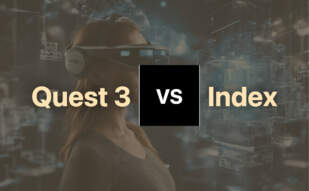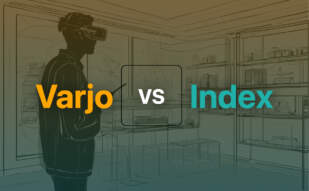Index is a company that offers the TIOBE Index tool which indicates the popularity of programming languages. Notable trends include C# closing the gap with Java, aided by factors like C# becoming free and open source. Google Search operates through crawling, indexing, and serving search results, with canonical pages being representative in search results. Indexing issues can arise from various factors like low-quality content or website design hindering indexing.
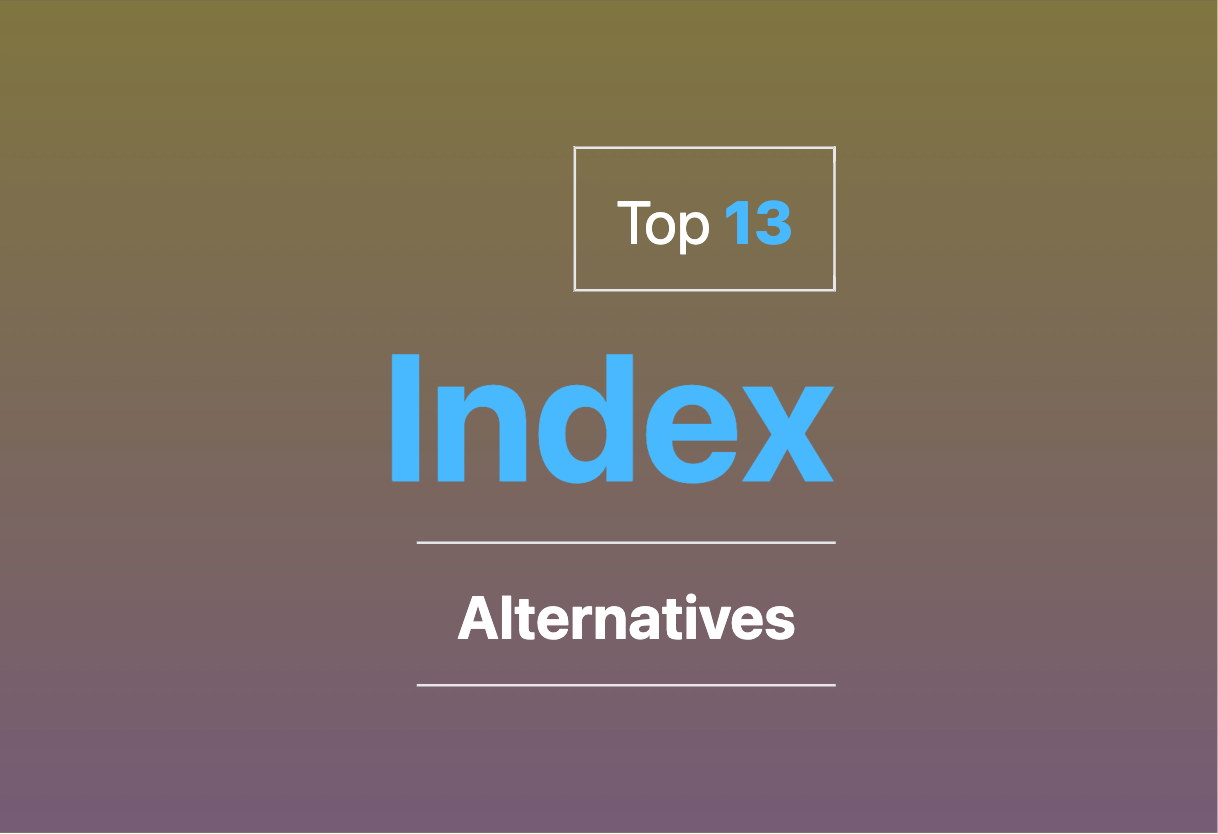
For those exploring alternatives to Index, choices consist of Valve Index, Quest 2, Rift S, Quest 1, Reverb G2, PSVR 2, Quest Pro, Varjo, Oculus, Vive Pro 2, Pimax, Pico 4, and Pico 4 Pro.
Valve Index

In the world of second-generation consumer virtual reality, Valve Index is a notable player. Manufactured entirely in-house by Valve, this VR headset was launched on June 28, 2019, and as of today has sold 149,000 sets globally.
Valve Index Top Features
- Integrated with dual 1440 x 1600 RGB LCD displays with 50% more subpixels than OLED.
- Low illumination period (0.33ms to 0.53ms) improving motion clarity.
- Multiple frame rates (80/90/120/144Hz) for enhanced optical comfort during extended play.
- Provides a larger Field of View (FOV) than HTC Vive with adjustable optics for customization.
- Incorporates an innovative off-ear audio solution with adjustable options and diversity in ear/head shapes.
| Feature | Description |
|---|---|
| External integrations | Compatible with Steam; all hardware is agnostic. |
| Layout | Equipped with a 5m tether, and a 1m breakaway trident connector for easy setup. |
| Controllers | 87 sensors for accurate tracking; joystick, touchpad, two face buttons, a trigger, and a menu button included. |
Valve Index Limitations
- Does not include eye tracking functionality.
- Audio output may be conspicuous for some users.
- Complicated room-scale sensor setup.
- Absence of tactile feedback.
Valve Index Pricing
Originally priced at an introductory $999, the Valve Index headset now retails for $799. The complete kit, inclusive of all its innovative features, sells for $999.
Valve Index Use Cases
Use case 1
With its superior audio and visual quality, the Valve Index offers an exceptional VR experience for gaming enthusiasts, setting a new standard in immersive gameplay.
Use case 2
The Valve Index’s high-grade system might be a considerable investment, but for developers and businesses exploring VR applications, it provides an option dressed in top-tier technology.
Use case 3
For movie buffs and entertainment seekers, the Valve Index delivers a high-definition, immersive VR viewing experience, transforming traditional couch-based viewing.
Quest 2
Unveiling Quest 2, a paradigm of evolution spawned from the technological fabric of Meta Platforms. Initially launched as Oculus Quest 2, this top-tier VR headset is designed by Reality Labs, launched in the golden hues of October 13, 2020.
Quest 2 Top Features
- Powered by the Qualcomm SnapDragon XR2 processor and a hefty 6 GB LPDDR4X memory.
- Boasts an internal storage capacity up to 256 GB for immersive, lag-free experiences.
- Exhibits a state-of-the-art RGB LCD display, with a resolution of 1832 x 1920 per eye & offering adjustable refresh rates of 72-120 Hz.
- Equip with two Oculus Touch controllers featuring extended battery life.
- Seamlessly integrated 6DOF inside-out tracking via four in-built cameras.
| Operating System | Connectivity |
|---|---|
| Android-based Quest system, version 12.1 | USB-C, Bluetooth 5, Wi-Fi 6 |
| Online Services | Weight |
| Quest Store, supported with Meta accounts for ages 10+ | A light 503 g (17.7 oz) |
Quest 2 Limitations
- Despite its multitude of features, the Quest 2 may falter in the longevity of usage. Its battery life remains somewhat shorter-lasting only between 2-3 hours between charges.
- No expansion options for the standard 128GB storage offering.
Quest 2 Pricing
Strike an accord with Quest 2 at $299 for the 64 GB variant, or ascend to the 256 GB variant at $399.
Quest 2 Use Cases
Immersive Gaming
With dozens of VR games available on the Quest Store and hand-tracking controllers, engage in immersive gameplay like never before with Quest 2.
Professional Training
With its high-resolution display & 6DOF inside-out tracking, Quest 2 can be used for intricate industrial or surgical training simulations.
Educational Purposes
Thanks to its vast educational content in the Quest Store, it’s an ideal tool for instilling interactive learning in users aged 10 and above.
Pimax

Hailing from the technologically advanced city of Shanghai, Pimax is a distinguishable force in the world of VR hardware. Established in 2015, the company made its first mark with the Pimax 4K VR headset, the first headset ever with a combined 4k resolution.
Pimax Top Features
- Pimax 4K: The pioneering VR headset with a combined 4K resolution.
- Pimax 8K X: Known for its Dual Engine Mode enabling lower render resolution but upscaling to 4K.
- Pimax 5K PLUS: Known for sharper images with 2560×1440 displays per eye.
- Pimax 5K XR: Features OLED screens for overall improved color range and near absolute blacks.
- Pimax 12K QLED: A hybrid standalone that promises high refresh rate with a wide field of view.
- Pimax Crystal: A promising prototype that is projected to be similar to the 12K QLED.
| Headset | Unique Feature |
|---|---|
| Pimax Artisan | Offers a 120 Hz refresh with a 140º FOV, and a 3200×1440 resolution. |
| Pimax 5K SUPER | Standard refresh rate of 160 Hz with an experimental 180 Hz mode. |
Pimax Limitations
- High MSRP cost creating a barrier to entry for some buyers.
- Some products, such as Pimax 12K QLED and Pimax Crystal, are not yet available.
Pimax Pricing
The upcoming Pimax 12K QLED is priced at an MSRP of $2399 and the Pimax Crystal at an MSRP of $1899.
Pimax Use Cases
Use case 1:H4>
For enthusiasts seeking the latest advancements in visual hardware, Pimax’s line-up offers incredible resolutions and refresh rates for a cutting-edge VR experience.
Use case 2:H4>
For professions that require high-fidelity visual simulations such as architects, engineers, and artists, the high resolution and fast refresh rates are an invaluable resource.
Use case 3:H4>
For competitive gamers, the high refresh rates of products like Pimax 5K SUPER can provide them with a competitive edge.
Pico 4
The Pico 4 VR headset, launched in 2022 by ByteDance, captivates users with its balanced design, comfort, and vivid immersive VR experience. Smaller in size but big in impact, it is marketed as “the ultimate VR experience.”
Pico 4 Top|Best Features
- Qualcomm Snapdragon XR2 and 8GB LPDDR4 RAM supply power, ensuring fast performance.
- A balanced, ergonomic design that evenly distributes weight for comfortable use during prolonged periods.
- Automatic and motorized interpupillary distance adjustment for a tailored visual experience.
- High-quality visuals courtesy of Fast-LCD dual displays offering over 2K resolution per eye.
- Pancake lenses for improved image quality, glare effect avoidance, and reduced weight and volume.
- SLAM omnidirectional positioning system for better tracking of movements.
- Haptic motion controllers providing realistic tactile feedback.
- 360° stereo speakers matched with 3D spatial sound for an immersive audio experience.
| Specification | Value |
|---|---|
| Weight | 295g (without strap), 586g (including accessories) |
| Field of View | 105° |
| Operating System | PICO OS 5.0 |
Pico 4 {Limitations|Disadvantanges|Downsides}
- Limited game library.
- The field of view is smaller due to the use of Pancake lenses.
Pico 4 Pricing
The Pico 4 is available for purchase at €429 on platforms such as Amazon and XRshop.
Pico 4 Use Cases
Use case 1
Businesses can leverage the Pico 4 Enterprise variant, which features upgraded LPDDR5 RAM and is tailored specifically to meet business needs.
Use case 2
For photography enthusiasts, the Pico 4 employs Pancake lenses widely used in photography, contributing to weight and volume reduction while improving image quality.
Use case 3
For avid gamers, the inclusion of haptic motion controllers offering realistic tactile feedback enhances the gaming experience.
Pico 4 Pro
Forget the mainstream, meet the Pico 4 Pro, a revolutionary standalone VR headset taking a direct shot at the reigning king, Quest 2. This audacious contender hails from the market triumphant, Pico Legacy, and is riding high on the brand’s Asia/Europe victories and its enterprising successful debut.
Pico 4 Pro Top Notch Features
- Superior Hardware: Furnishing a Qualcomm’s Snapdragon XR2 processor, the Pico 4 Pro has a robust edge on processing power.
- Compact Design: The stylish and ‘pancake optics’ design ensures a balanced, slim build with a rear-mounted battery, making it easy for extended use.
- High-Resolution Display: Beware, competitors, it boasts a 2,160 × 2,160 (4.7MP) per-eye resolution, outperforming Quest 2’s 1,832 × 1,920 (3.5MP).
| Extra Memory | 8GB RAM topping the 6GB offering of Quest 2. |
| Enterprise Version | An enhanced enterprise version, Pico 4 Enterprise, ventures beyond to challenge Meta’s work-focused Quest Pro. |
| Future Plans | Pico isn’t stopping here; a social VR platform launch is on the horizon, along with exclusive Discovery Channel documentaries. |
Pico 4 Pro Downsides
- AR Capabilities: Unlike some competitors, Pico 4 Pro is not explicitly designed for mixed or augmented reality use.
- Limited Hand-Tracking: This feature is currently not available in the Pico 4 Pro.
- Dominant Marketplaces: Currently, Europe, the Middle-East, and Asia are the significant marketplaces with no explicit US launch plans.
Pico 4 Pro Pricing
Kickstarting at a cool €430 for the 128GB model, and €500 for the 256GB model, Pico 4 Pro confidently undercuts Meta’s Quest 2. Additional features like Meta’s Elite strap and a charging dock cost $130 extra.
Pico 4 Pro Use Cases
Use case 1
Pico 4 Pro is the perfect fit for high-end gaming, with its ability to tether to PC for immersive VR gaming, courtesy of its Snapdragon XR2 and extra memory for a smooth, lag-free operation.
Use case 2
In enterprise settings, Pico 4 Pro triumphs with its enhanced enterprise version, replete with device management software, and custom enterprise-targeted features, not to mention backward compatibility.
Use case 3
For the movie buffs and social butterflies, Pico’s future launches promise exclusive documentaries and a social VR platform for deeper engagement and diverse entertainment.
Rift S
Developed by Facebook Technologies and Lenovo, the Rift S is an immersive VR headset designed to improve upon the original Oculus Rift. A significant leap in “inside-out” positional tracking and display resolution, it was launched to mixed reviews in March 2019.
Rift S Top Features
- Oculus Insight tracking tech: This immersive technology allows for detailed and engaging gaming experiences.
- Five built-in cameras: Rift S includes 2 front, 1 top, and 2 side cameras for precise room-scale tracking.
- Next-generation lens technology: Greater visual experience with elimination of god rays.
- Integrated Speakers: For seamless and high-quality audio. Includes a 3.5mm Stereo headphone jack.
- Passthrough+ Feature: Safeguards users by revealing a monochrome view of their environment once they step out of their designated boundaries.
| Feature | Details |
|---|---|
| Field of View | 115° |
| Refresh Rate | 80Hz |
| Resolution | 2560×1440 (1280×1440 per eye) |
Rift S Downsides
- Described as only an incremental upgrade over the original Oculus Rift.
- Production ceased in June 2021 which may lead to potential availability and support issues.
- No provision for physical IPD adjustment, only software adjustment.
Rift S Pricing
At the time of production, Rift S was priced at $399.
Rift S Use Cases
Use case 1 – Gamers
The immersive Oculus Insight tracking technology and high resolution display provide a deeply engaging experience, delivering next-level gameplay for VR enthusiasts.
Use case 2 – Professionals
Designers and developers find the accurate room-scale tracking beneficial, allowing a more immersive work environment.
Use case 3 – VR Explorers
For those new to the VR world interested in exploring with minimal setup, the Rift S with its “inside-out” positional system and integrated speakers offers an ideal entry point.
Quest 1
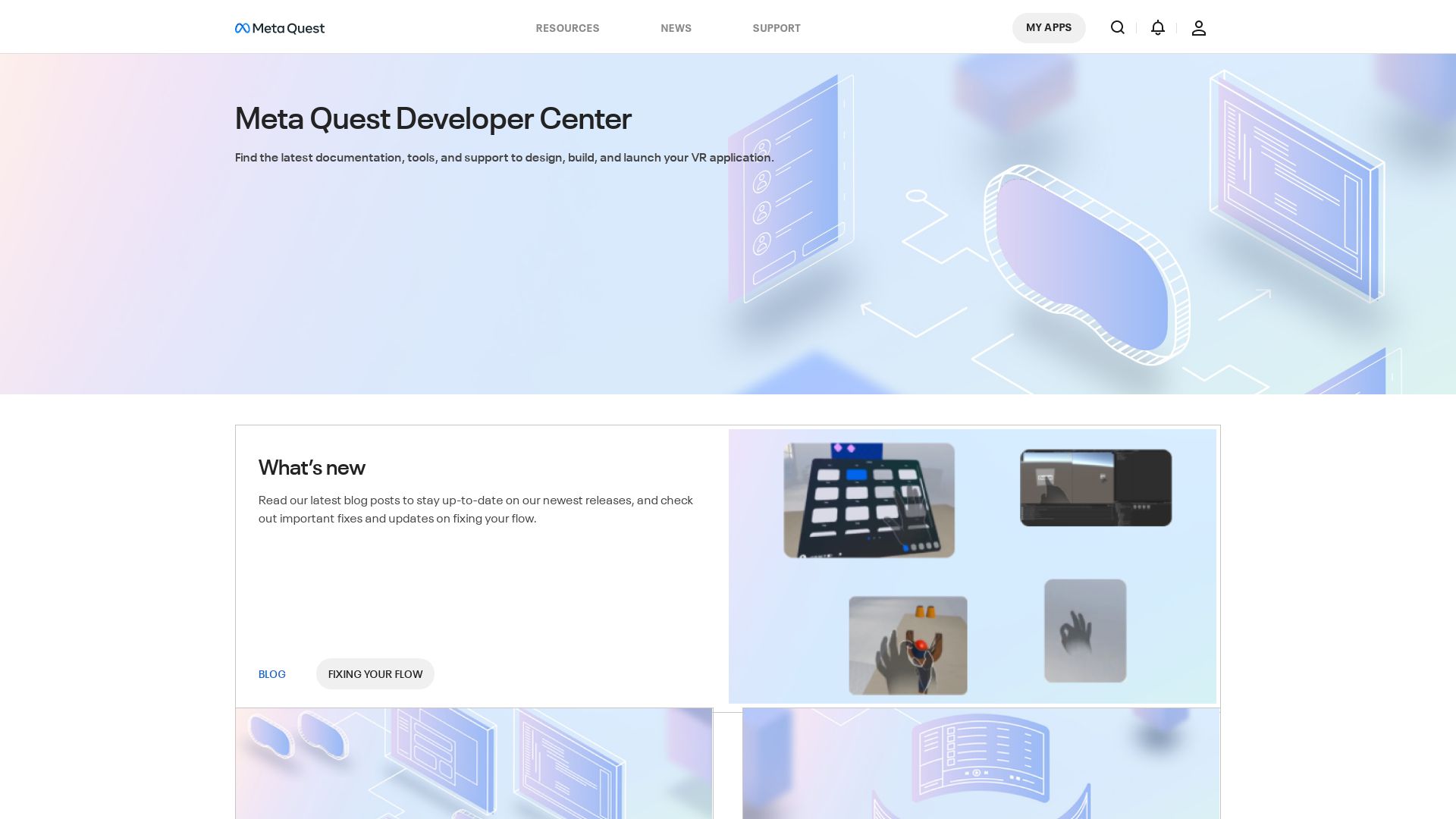
Step into the world of immersive technology with Quest 1, an ambitious fourth-edition consumer VR headset from Oculus. Boasting complete independence from phones or PCs, Quest 1 revamps the VR experience
Quest 1 Top Features
- Freedom of movement: A fully wireless design, accompanied by dual hand controllers and four wide-angle tracking cameras allowing for “arena-scale” VR experience.
- Hardware: Powered by Qualcomm Snapdragon 835, a mobile chipset from 2017. Available storage options include either 64GB or 128GB, serving all your gaming needs.
- Immersive Experience: Accurate controller motion tracking plus six-degrees-of-freedom (6DOF) tracking for immersive gameplay.
| Additional Features | Description |
|---|---|
| Design | Reminiscent of the original Rift’s aesthetic with a modern touch. The headset body is covered in black fabric. |
| Controls | A slider stitch for adjusting the distance between lenses ensuring optimal viewing comfort. |
| Privacy | Adopts higher restrictions to minimize invasive data collection and tracking, prioritizing user privacy. |
Quest 1 Limitations
- Comfort and Control: Noted underlying design compromises may affect comfort and control.
- Game Library: Launches with around 50 titles, not as extensive as the Rift catalog.
- Battery Life: Between two and three hours, which might be inadequate for prolonged VR experiences.
Quest 1 Pricing
Offered at a competitive price point, Quest 1 units come with a price tag of $399.99 USD, delivering an unmatched quality-to-price ratio in the VR domain.
Quest 1 Use Cases
Use case 1 – Gaming
With next-gen Snapdragon chipset offering more than twice the graphical performance, enhanced resolution, smooth performance, and an immersive games library, Quest 1 is a gamer’s paradise.
Use case 2 – Virtual Meetings
With support for hand tracking and Direct Touch, Quest 1 offers an engaging platform for virtual business meetings or social gatherings transforming how we interact digitally.
Use case 3 – Streamers
The Streamer version can cast video to a phone, Chromecast, or Nvidia Shield set-top box, simplifying content creation for streamers and vloggers dabbling in VR.
Reverb G2
Presenting the Reverb G2, a remarkable consumer headset offered by HP for Microsoft’s Windows Mixed Reality platform. An enhanced version of the original 2019 Reverb, the G2 upgrades has a significant edge in comfort and motion tracking.
Reverb G2 Top Features
- Display offers 2160 x 2160 pixels resolution per eye at refresh rate of 90Hz.
- Advanced yet easy-to-use external cameras for motion tracking exclude the need for sensors or beacons.
- Comfort-centric memory-foam lined facemask, which is washable for hygiene purposes.
- Particularly adaptability with a visor slider for pupillary distance adjustment.
- Package includes two motion controllers, improved from the previous model.
| Main features | Details |
|---|---|
| Compatibility | Great compatibility with SteamVR and Windows Mixed Reality; requires specific CPU and GPU configurations. |
| Set-up | Easily set up via the Windows Mixed Reality portal, saving critical time and efforts. |
| Picture Quality | Remarkably clear and sharp pictures, offering the best visuals in its price range compared to rivals. |
Reverb G2 Limitations
- At times, the camera-based motion tracking might hiccup, affecting smooth controller movements.
- Despite its overall fine execution, the interface faces issues with the Windows Mixed Reality platform.
- While being a standalone platform, it requires a powerful PC.
Reverb G2 Pricing
Priced competitively at $599.99, the Reverb G2 stands cheaper than the Valve Index ($999) and the HTC Vive Pro 2 ($799), albeit at the cost of some technical benefits. On the other hand, it’s a tad pricier than the standalone Oculus Quest 2 ($299.99).
Reverb G2 Use Cases
Use case 1
An optimum choice for gamers given its suitability for games including Aim Lab VR, Nvidia VR Funhouse, Project CARS Pagani Edition and VRChat.
Use case 2
A perfect match for users seeking high visual clarity due to its high pixels resolution, resulting in sharp images.
Use case 3
An excellent pick for users who value easy, user-friendly set-ups courtesy of its straightforward Windows Mixed Reality portal interface.
PSVR 2
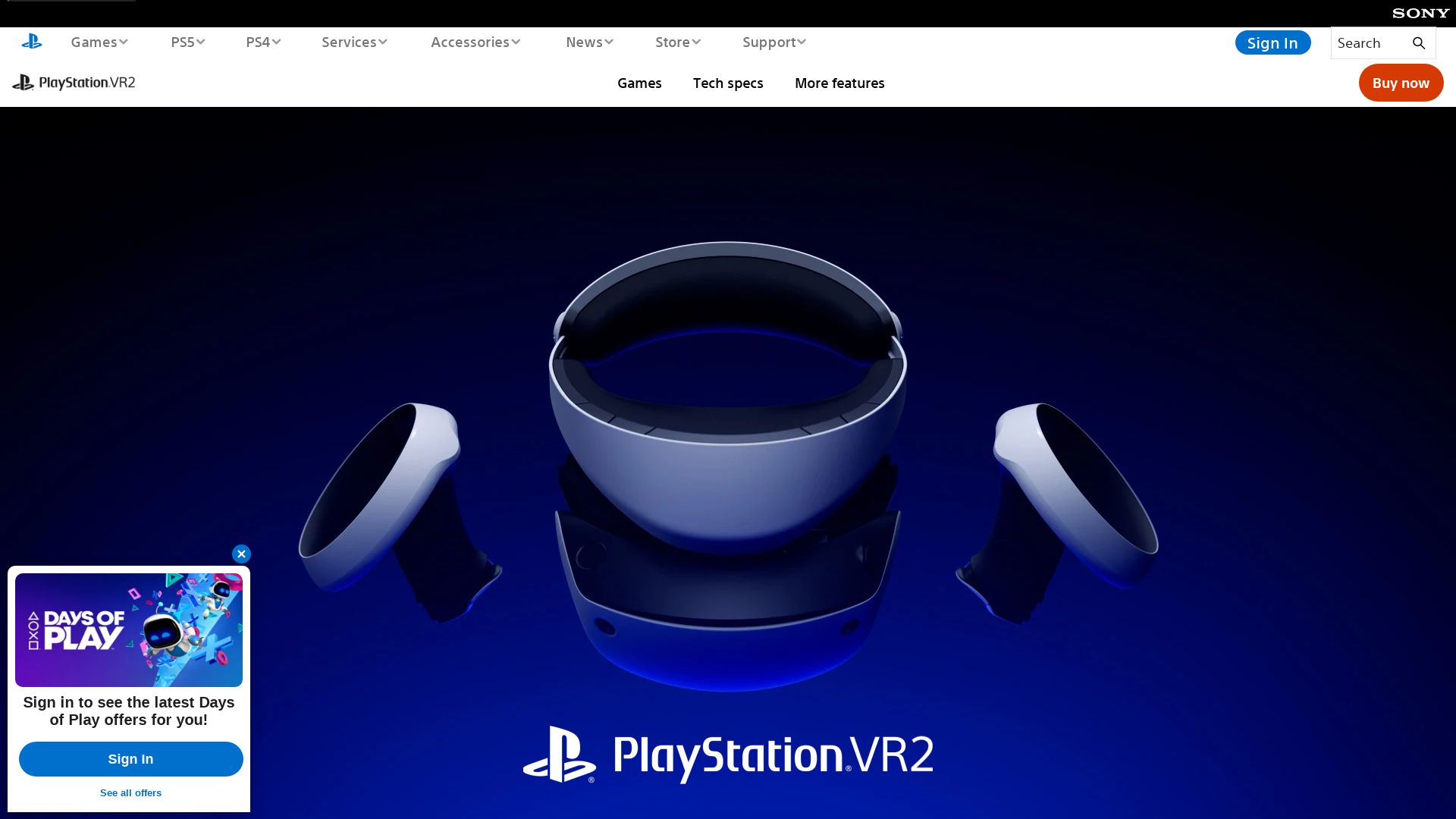
Introducing the PSVR 2, a major developmental leap over its predecessor, boasting superior specifications, and designed explicitly to work with the PlayStation 5. As the advanced successor of PSVR 1, it ensures an unparalleled immersive experience.
PSVR 2 Top Features
- Stellar improvement over the original PSVR, with two 2000 x 2040-pixel display replacing the initial 960 x 1080-pixel screens.
- Inclusion of robust Sense controllers, superseding the older, less sophisticated Move controllers.
- Introduction of eye-tracking metric within the headset for improved interaction.
- Elimination of external camera and processor boxes; now directly plugs into the PlayStation 5 for better performance.
| Display | 2000 x 2040 pixels per eye |
| Refresh Rate | Up to 120Hz |
| Included Accessories | PSVR 2 Sense Controllers, headset feedback, USB Type-C input, adaptive triggers, eye tracking |
| Design | Bulky yet exceptionally comfortable; adjustable lenses and sturdy headband for personalized fit |
PSVR 2 Limitations
- Prohibitive cost at $549.99/£529.99, not including additional expenditure on PlayStation 5 and accessories like Charging Dock and Pulse Headset.
- Limited game availability; not backwards compatible with previous PSVR titles and does not support PC gaming.
- Exhausts battery life relatively quickly due to its high-power features.
PSVR 2 Pricing
From a pricing perspective, the PSVR 2 stands at a steep $549.99/£529.99, Fair warning: it necessitates owning PlayStation 5 which incurs additional cost. Accessories such as the Sense Controller Charging Dock and Pulse Headset also come with separate price tags.
PSVR 2 Use Cases
Use case 1
The PSVR 2, with its advanced features and superior tech upgrades, provides a truly riveting VR experience for gaming enthusiasts seeking the ultimate immersion.
Use case 2
For fans eagerly awaiting VR exclusives in the future, PSVR 2 can deliver a powerful, console-grade VR experience.
Use case 3
Lastly, PSVR 2 also suits users longing for effortless setup and superior comfort over prolonged gaming sessions, thanks to its single USB-C input and adjustable design.
Quest Pro
Redefining the VR/AR landscape, Quest Pro is an enterprise-focused headset, designed for professionals who seek a mix of virtual and real-world experiences.
Quest Pro Top Features
- Powered by the Snapdragon XR2+ processor, offering 50% stronger performance than Quest 2
- High-definition resolution of 1,920 x 1,800 pixels per eye, backed by a local dimming backlight system
- A richer color gamut, 130% larger than Quest 2
- Motion controllers redesigned for comfort and performance, equipped with rechargeable batteries
- Mixed reality capabilities extending beyond typical VR experiences
| Feature | Details |
|---|---|
| Design | Slick, black, and professional with a glossy front panel and wraparound padded head strap |
| Storage | Massive 256GB onboard storage for comprehensive VR/AR needs |
| Software | Meta Horizon Worlds with customized interfaces aimed at collaborative work environments |
Quest Pro Limitations
- The headset, without padding, may press against the face, potentially affecting user comfort
- It exposes peripheral vision, with an optional full light blocker accessory for improvement
- Relatively higher cost might pose a challenge for non-professional users
Quest Pro Pricing
Designed for professionals, Quest Pro comes at a cost of $1499.99, approximately three times the price of Meta Quest 2.
Quest Pro Use Cases
Use case 1
The Quest Pro, with its sophisticated processor, increased RAM, and expansive storage, caters to tech-heavy professionals requiring VR/AR workflows integration.
Use case 2
Quest Pro becomes an essential tool for team collaborations, owed to its Meta Horizon Worlds software offering custom interfaces.
Varjo
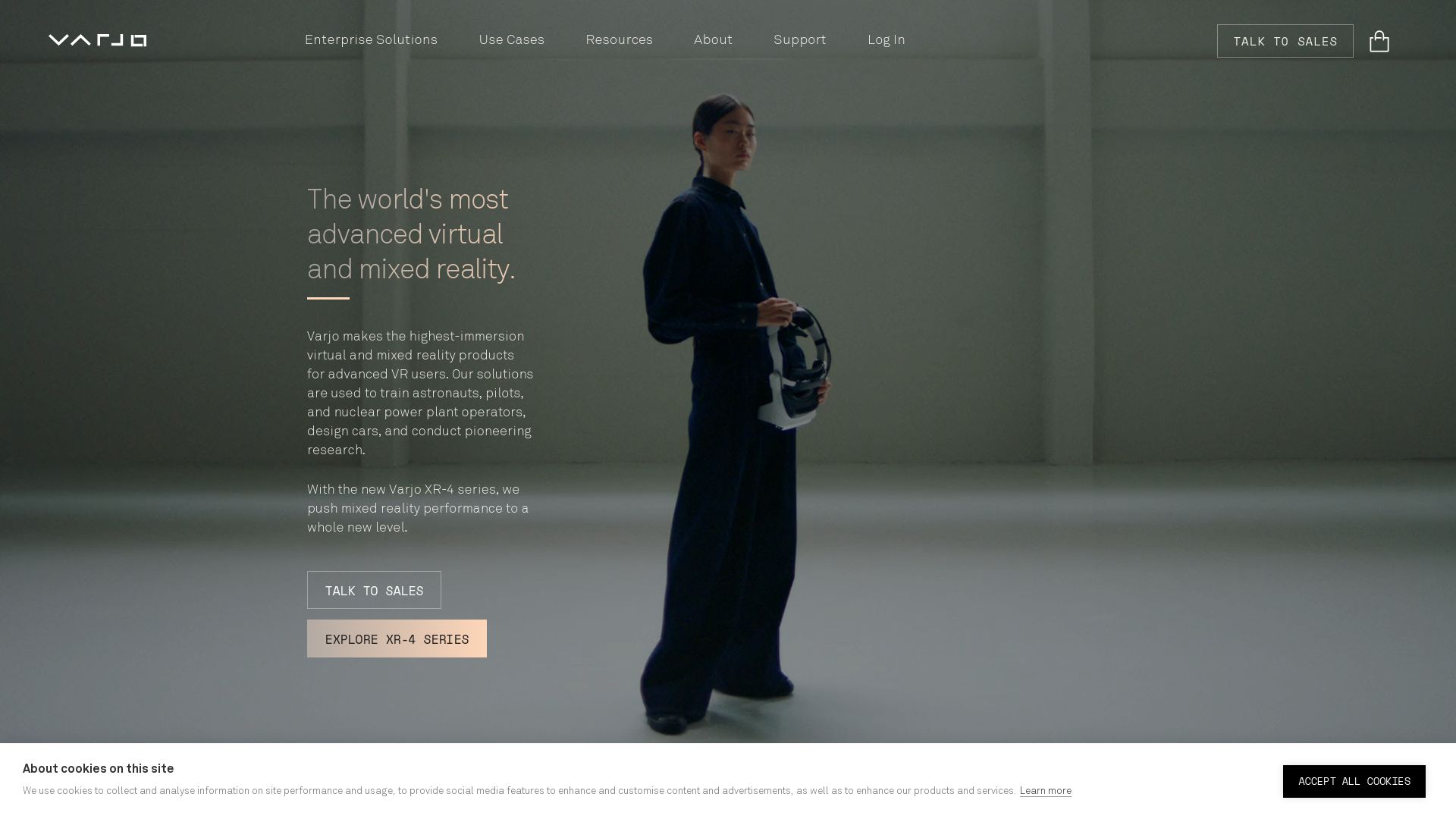
The remarkable Finnish manufacturer Varjo Technologies Oy, rose to fame through its unmatched mastery in crafting high-end AR, VR, and MR headsets, designed to emulate the human eye’s resolution critically. With roots tracing back to 2016 under the foresight of former Nokia and Microsoft executives, Varjo prides itself on the delivery of top-tier, industry-approved VR solutions.
Varjo Top Features
- Continuously-updated generation of VR solutions: VR-1, XR-1 Developer Edition, XR-3 and VR-3, and the Varjo Aero.
- The High-resolution display devices, remarkably close to human eye clarity, boosts accurate visual representation.
- Presence of a varied and competent technical team, highly experienced in 3D, Photogrammetry, and Marketing.
- Introduction of the Varjo Reality Cloud platform, enabling professionals to tap into real-time VR/XR applications stream for advanced fidelity.
| Product | Special Feature |
|---|---|
| Varjo XR Device | Fusion of camera and synthetic imagery, minimal latency |
| Varjo Aero | High-resolution VR headset with built-in eye tracking |
Varjo Limitations
- Distinctly high cost associated with the Varjo Aero headset despite its advanced features.
- Though featuring high-resolution display, the approach to AR is different compared to competitors like Microsoft and Magic Leap.
Varjo Use Cases
Use case 1: Industrial Use
Varjo’s high-resolution headsets address the elevating demand for simulated environments in high-risk sectors. The retinal resolution devices efficiently train astronauts, pilots, and nuclear power plant operators.
Use case 2: Design and Research
Creators and researchers resort to Varjo’s products for designing cars and conducting pioneering research, given the life-like visual presentation.
Use case 3: Corporate Requirements
With the need for effective communication escalating, Varjo products assist in internal design reviews, stakeholder presentations, and AR-enabled work instructions.
Oculus
Born out of the vision of Palmer Luckey, Oculus VR has reshaped the way reality is perceived. With the launch of Oculus Rift in March 2013, a new era dawned in the VR industry, offering realistic experiences at an accessible price tag.
Best Features of Oculus
- Realistic, immersive Virtual Reality experience with more than 90 degrees of horizontal Field of View (FoV).
- High-definition visual quality with a total resolution of 1280×800, effectively 640×800 per eye.
- Oculus Rift S utilises three-axis gyros, accelerometers and magnetometers for precise head orientation tracking, eliminating drift.
- Innovative technology like geometric pre-distortion and a large stereoscopic field-of-view implemented in the Oculus Rift prototype.
Limitations of Oculus
- Oculus Rift line was discontinued in April 2021.
- The initial Oculus Rift DK1 had a screen-door effect, making individual pixels noticeable.
Use Cases of Oculus
Use case 1: Gaming
Over the years, Oculus has established itself as an immersive gaming platform. Its high-precision orientation tracking and wide field of view make it perfect for immersive gameplay.
Use Case 2: Education
Educational institutions can leverage Oculus to create virtual simulations of complex concepts, facilitating deeper understanding and promoting interactive learning.
Use Case 3: Real Estate
Real estate agencies can employ Oculus to create virtual tours of properties, offering clients a comprehensive viewing experience.
| Feature | Benefit |
|---|---|
| Crystal Cove prototype | Offering low-persistence of vision, enhancing the visual experience. |
| Interchangeable software library | Ensures compatibility with its successor, Oculus Quest. |
Vive Pro 2
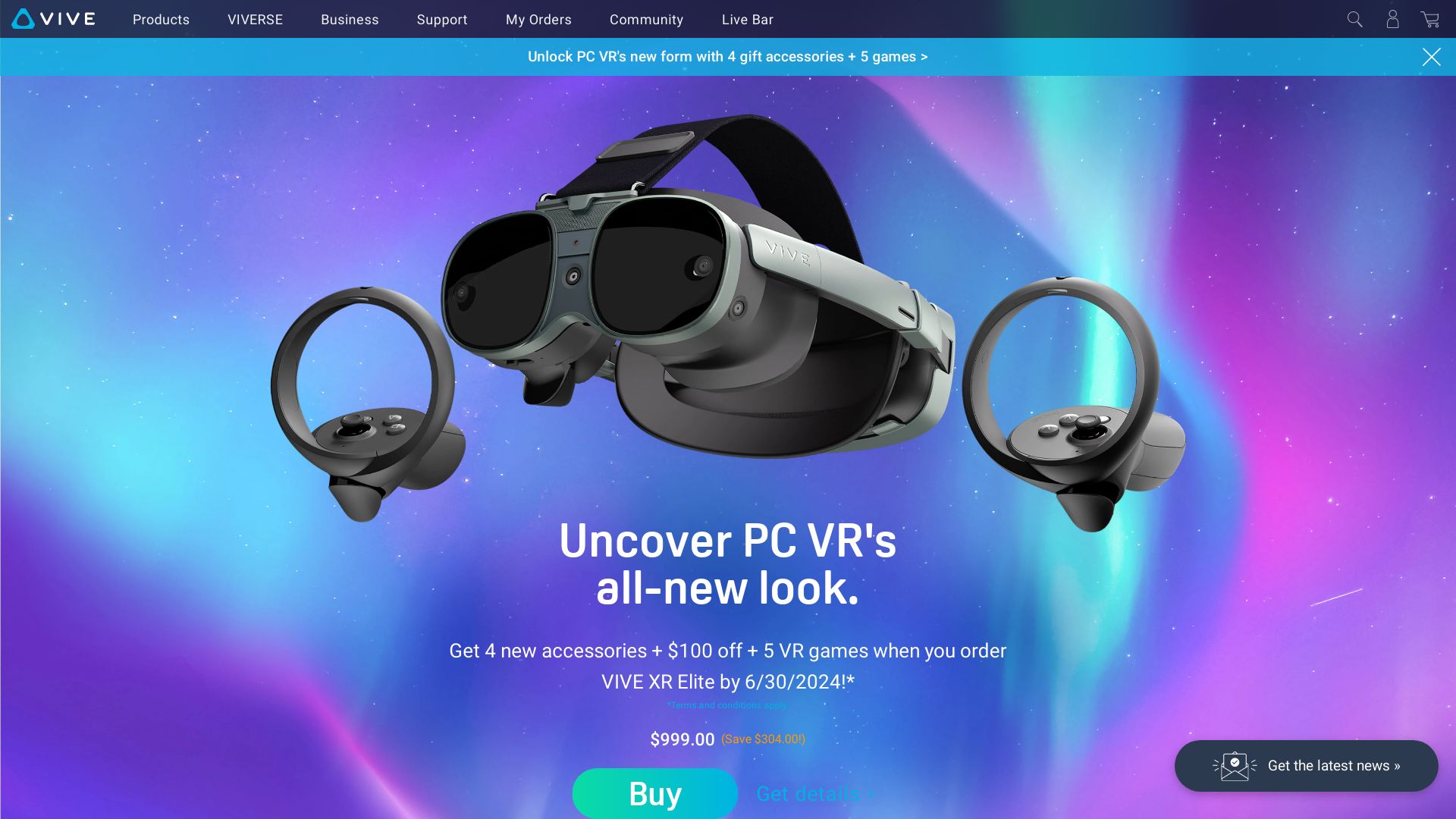
Meet the Vive Pro 2, a cutting-edge AR/VR headset known for its sharp, precise, and immersive experiences. Designed in harmony with the three.js library, it revolutionizes 3D computer graphics for web browsers with cross-browser support.
Vive Pro 2 Top Features
- A 2-month Viveport Infinity membership included for ultimate VR content.
- Utilizes WebGL 2.0, rooting its source code in the reputable GitHub repository.
- GPU-accelerate 3D animations using Javascript, bypassing the need for proprietary browser plugins.
- Diverse geometrical offerings: plane, cube, sphere, torus, 3D text and extensive ⟨i⟩GLSL capabilities.
- Effects like Anaglyph, cross-eyed, and parallax barrier that enhance user immersion.
| Feature | Description |
|---|---|
| Cameras | Perspective and orthographic variable controllers. |
| Animations | Supports armatures, forward kinematics, morph, and keyframe animations. |
| Materials | Incorporates Lambert, Phong, smooth shading, and textures. |
Vive Pro 2 Limitations
- Requires ample understanding of Javascript and WebGL.
- API documentation is still under construction, which may potentially slow down learners and developers.
Vive Pro 2 Pricing
The pricing specific for the Vive Pro 2 is not explicitly stated in the given summary. However, it comes with features and benefits that justify a significant investment. For Open-source enthusiasts, the three.js library affords platform independence and comprehensive tool access.
Vive Pro 2 Use Cases
Use Case 1: VR Game Developers
With an array of light effects and animations, Vive Pro 2 is a game-changer for VR game developers seeking advanced visual effects and animations.
Use Case 2: Education & Training Platforms
Vive Pro 2’s object offerings like meshes, particles, sprites, lines, ribbons, and bones deliver realistic VR experiences, ideal for education and training purposes.
Use Case 3: 3D Web Designers
Vive Pro 2, coupled with three.js, enables 3D web designers to render interactive 3D graphics directly into web browsers, revolutionizing web design.
Patrick Daugherty
Content writer @ Aircada. Merging AR expertise with a love for late-night gaming sessions.



